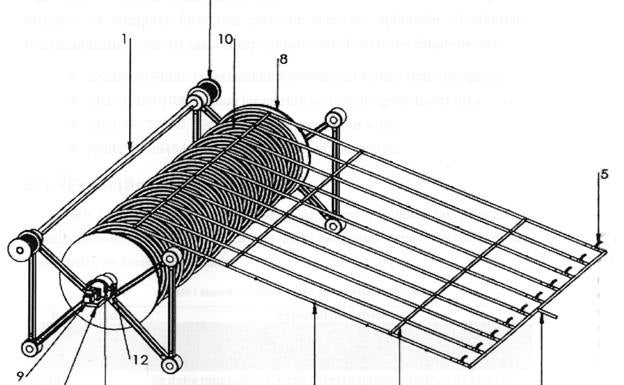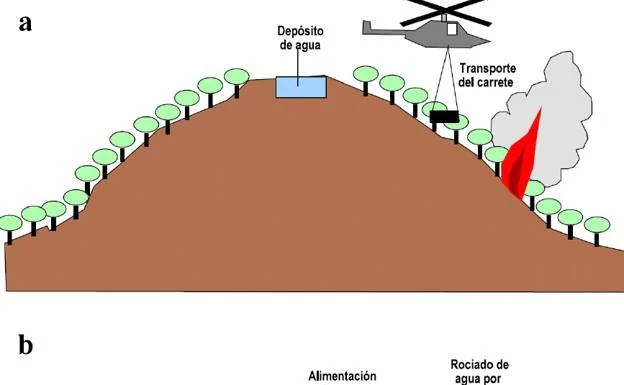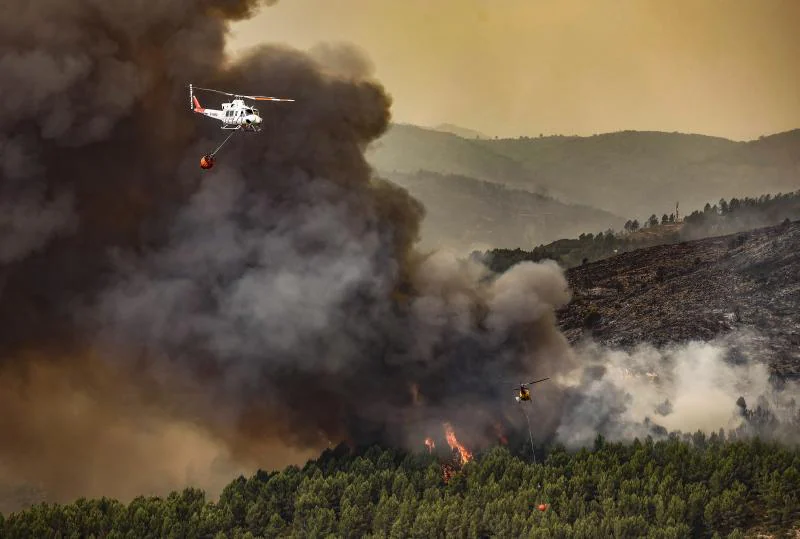Pioneering device to prevent and extinguish forest fires is patented in Malaga
82-year-old inventor Antonio Rico, from Torrox, together with Juan José Vallejo, an electrical and mechanical engineering student, and the company CreAcciona have created the system which would produce a curtain of water
Forest fires in Spain have devastated almost 301,000 hectares since January this year according to estimates by the European Forest Fire Information System (EFFIS). Although provisional data up to 18 September from the Ministry of Ecological Transition (Miteco) lowered the figure to 261,000 hectares. In any case, these figures are triple those recorded in 2021, when 75,547.54 hectares were destroyed.
In Malaga there have been two major fires this year; one in Sierra Bermeja in July and another in Mijas in July, which between them devastated more than 15,000 hectares. Last year, almost 10,000 hectares were burnt in Sierra Bermeja.
To contribute to the work and safety of forest fire prevention, 82-year-old inventor Antonio Rico, from Torrox, together with Juan José Vallejo, an electrical and mechanical engineering student, and the Malaga company CreAcciona, have developed and patented a pioneering device to prevent and extinguish forest fires, consisting of a hose reel that can be transported by the air and which, once deployed in an area close to the fire, produces a curtain of water which, used effectively on the base of the fire, "allows it to be contained and extinguished".
Reforestation
According to its creators, the patent, which has been developed as a final degree project, is intended to be added to the existing means "as a complement to extinguish and contain forest fires and, in addition, to help facilitate the reforestation of the affected areas".
The device consists of a system of hoses wound on a reel that can be connected to a water source, either natural, such as lakes or rivers, or artificial (closed reservoirs) that are near to the site of the fire.
As many reels as needed can be transported by air and firefighters could connect them to a water source and with all the hoses deployed, they form "a kind of water firebreak" that would contain the advance of the fire in a particular direction, or, by placing several reels around the source of the fire, create a perimeter firebreak.
"The systems currently in use, dropping water from seaplanes at a height of 200 metres, are not effective," says Rico, who says his invention is "affordable, compared to what is invested in maintaining firebreaks”. Rico went on to say, "Ninety-nine percent of fires are provoked, using chemical retardants mixed with water, such as ammonium polyphosphate, which contaminate the soil and delay the recovery of vegetation, as has been demonstrated by the CSIC.”
Rainwater collection
For this reason, the inventors propose the possibility of building rainwater tanks, which are filled naturally with rain, in strategic areas of firebreaks, especially in those mountains that have shown a repeated tendency to fires, and especially in those mountains that are protected natural areas. "Installing two fibre tanks buried in a mountain is possible, each one costs only 7,000 euros and would collect rainwater," says Rico.
The reels, which weigh about 300 kilos each, are six metres long and would allow for 200 metres of rubber, so that by installing, for example, eight of them lengthwise, they would create a wet area of 9,600 square metres. "This wet area would slow down the advance of the flames much more effectively than throwing water from a height of 200 metres," explains Rico, who uses the example of a barbecue: "How is it better to extinguish it, by throwing water from above or at the base?

Rico, who is also the creator of other successful inventions such as the underground 'Deep Drop' irrigation system, which SUR reported on in summer, and Vallejo say that they are currently in talks with public-private organisations and entities, some of which have shown interest in the patent, which has been registered in more than 170 countries.
However, for the moment, no administration has taken the step of incorporating it. "It seems that there is no interest, because there are many interests at stake in the extinction of fires," adds the inventor from Torrox.


